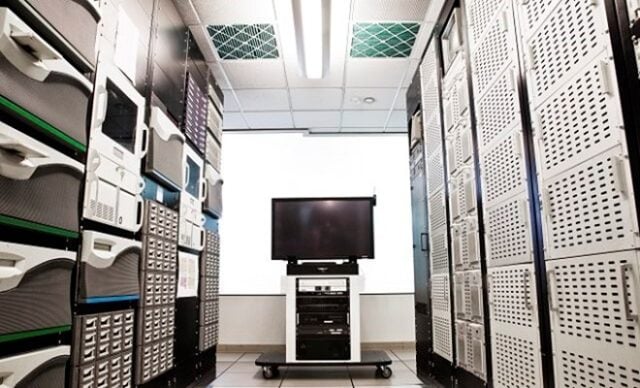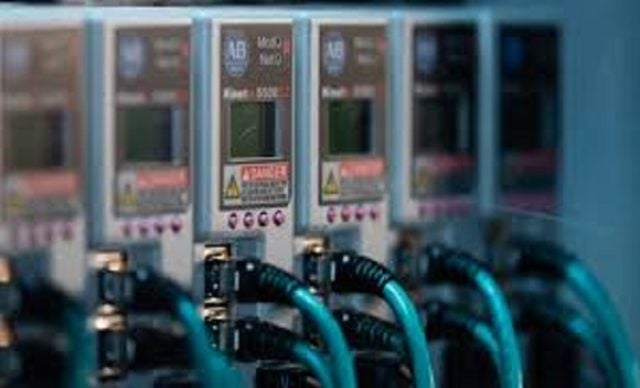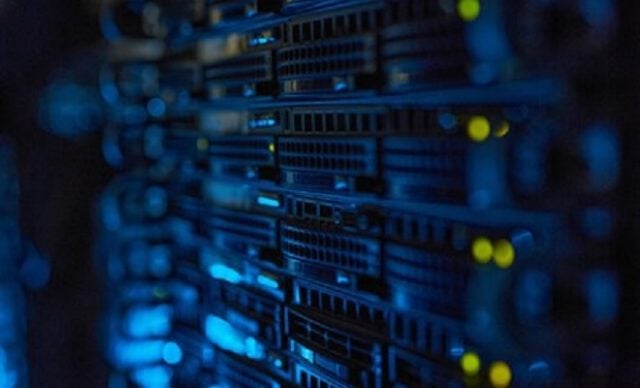
With the advent of online data storage solutions such as Cloud, Kubernetes, and Dropbox, to name but a few, physical, portable data storage devices are becoming more and more obsolete. Another factor that is driving this trend is the sheer volume of data being generated by organisations and businesses, on practically every business process. Keeping track of business- and workflows is possible if your organisation has the capacity to store what is commonly being referred to now as “big data”, and the benefit of this is that it has made advanced analytics of data that was previously unrecorded possible, providing your organisation or business with greater insight into the information it collects – effectively turning data into insight for better processes, customer engagement, and security.

Different Data Storage Solutions for Business
Digital and Online Storage Solutions for Business
AI-Driven, Automated Data Storage Solutions
Why Do I Need To Use An Edge Data Centre?
The Adoption of SDN and NFV Tech
APC Edge Computing Data Storage Solutions
Improving the Customer Experience through Data Storage Solutions Centre Location
Improving Operational Efficiency through Data Storage Solutions Centre Location
Developing New Revenue Streams through Data Storage Solutions Centre Location
Despite practically limitless storage availability online currently, that can be secured in several ways, external hard drives, removable hard drives, USB storage devices, and Direct-Attached Storage (DAS) devices still remain widely used. A DAS device is connected directly to the computer, storing data onto the DAS rather than to a server or network. The problem with this is that, as is also the case with the other external and removable devices mentioned, it can only store information from the particular computer it is connected to, and would therefore have to be carried around and connected to other computers that also has data that needs to be stored. Most of these devices connect through USB ports, and one can easily buy what you need for storage capacities of 1TB and more.

One of the problems with such external storage devices is that they can easily be lost or misplaced, can carry computer viruses from one machine to another, and data can be corrupted easily if the device in question is placed close to a magnet, for example. Although they are cheap and easy to get, external or removable storage devices are not necessarily the best option for you or your enterprise, especially not if you work in a large organisation that produces large volumes of data daily.
Given some of the problems mentioned above with external and removable storage devices, it has become standard for most operations to store their data on their own networks. A Network-Attached Storage System (NAS) connects directly to the company network itself rather than an individual server or workstation, and this makes the data stored on it accessible to all devices connected to the network. Ultimately, a NAS is a standalone computer acting as a file server.

NAS is more expensive, but it is scalable in nature. You can even re-purpose an old computer as a dedicated NAS file server. You can install additional hard drives to the system as and when you need them. Additionally, NAS systems also provide excellent data redundancy support by way of Redundant Array of Independent Disks (RAID) configurations that mirror data across multiple drives to help safeguard against hardware failures.
While the previous twenty years of ICT development focused mostly on universal connectivity and the development of the internet, our current era is focused on big data, advanced analytics, and secure ways to store data online. Data that would essentially be available forever, accessible from anywhere, and with user activities updated in real-time, all the time. The biggest difficulty the industry has had to face with this type of storage relates to security. We now live in the age of hyper-connectivity. From the way we do business to the way we consume information, we've become reliant on autonomous connections powered by AI and Edge computing.
This trend was starting to pick up speed even before the massive decentralisation made necessary by the global COVID-19 pandemic in 2020, which coincidentally made cloud and other online-based solutions for storing and sharing information essential. Prior to 2020, offices – and workers – around the world were becoming increasingly mobile, working either completely remotely, in hybrid working arrangements, and of course in the field at times. Big Tech companies responded to this changing landscape of work and life by developing a wide variety of mobile devices to cater to the needs of any type of user, whether they need only the basics or more advanced capabilities in their computers.

As mentioned, the biggest focus currently is on these online storage and sharing platforms and their development, as the possibilities for remote work, remote connectivity, the sharing and collection of data in real-time, and insightful analytics are endless with these applications. The biggest concern with them, however, has been the security and privacy of data.
When it comes to securing a fully deployed remote workforce connecting to a centralised network, securing the flow and storage of information becomes a whole different ball game. Networks comprising multiple individual devices in multiple locations form the backbone of any business enterprise today. Networks are used for almost every process or task in your organisation, from downloading an attachment, sending and receiving emails, accessing the internet, and even printing documents. A network can be a small system handling a handful of devices for small enterprises or a large system handling thousands of devices across the globe.
There are 11 types of networks in use today, including Personal Area Networks (PAN); Local Area Networks (LAN); Wireless Local Area Networks (WLAN); Campus Area Networks (CAN); Metropolitan Area Networks (MAN); Wide Area Networks (WAN); Storage-Area Networks (SAN); System-Area Networks (also known as SAN); Passive Optical Local Area Networks (POLAN); Enterprise Private Networks (EPN); and Virtual Private Networks (VPN).
When it comes to the most cutting edge technologies currently in the development stages, such as AI-powered systems, machine learning, advanced data analytics, telemetry, and information storage securely accessible from anywhere on the globe via online storage platforms such as the Cloud, Kubernetes, and Dropbox to name but a few, most Big Tech companies have developed data storage solutions to manage, monitor, and secure this vast flow of information being exchanged via wireless networks every day. These management applications perform for the health and integrity of your organisation through the most advanced ICT infrastructure, by identifying and isolating intrusions into the network, safely isolating essential data into “packages” or “containers”, and allowing for the centralised deployment of applications as well as security software.
Smarter AI, automated processes, checks, and reporting, as well as real-time analytics, have become accessible to ICT teams who can now view all the issues, metrics, recommendations, and activity on your network on one screen, and in real-time. Most Big Tech companies now collect vast amounts of data from individual, scattered network nodes over wide geographical areas using AI technology and telemetry – an automated process that collects essential information and sends it to a centrally located data centre, with all information aggregated to report on network-wide events, keeping individual nodes completely anonymous.

Data that is transmitted this way via the internet over HTTPS, is encrypted with the Transport Layer Security (TLS) protocol. Only authorised technical support engineers can access this information, and they can only do that through a series of multi-factor authentication layers. This data collected via AI and telemetry is stored at secure locations by the big players in ICT that employ the most advanced, industry-leading security protocols for use in analysis and towards the development of better and better systems, innovative product offerings for users, and greater, constantly evolving layers of security to remain in-step with the rapid development of more and more sophisticated cyber-attack and breaching techniques used by hackers and cyber criminals.
Edge data centres are small data centres that are located on the periphery of a centralised network. Edge computing is the practice of capturing, storing, processing, and analysing data near the client, where the data is generated, instead of in a centralised data-processing warehouse.
At a basic level, edge data storage solutions centres will work as a connection between two networks. The edge data centre will be located closer to whatever machine is making a request, inside an internet exchange point. The internet exchange point is a physical data centre location where multiple network carriers and service providers will connect. This will allow a quick flow of traffic between networks. The edge data centre itself might be made of a micro-data centre – which will contain the devices a traditional data centre has, just in a smaller footprint. By being able to move processing requests like JavaScript files or HTML closer to the requesting machine through data centre location, the amount of time needed to deliver that data back will decrease.
Edge data centres can deliver cached content and cloud computing resources to these devices. The concept works off edge computing, which is a distributed IT architecture where client data is processed as close to the originating source as possible. Because the smaller data centres are positioned close to the end-users, they are used to deliver fast services with minimal latency.
The major benefit of an edge data centre is the quick delivery of services with minimal latency, thanks to the use of edge caching. Latency may be a big issue for organisations that have to work with the internet of things (IoT), big data, cloud, and streaming services. Edge data storage solutions centres can be used to provide high performance with low levels of latency to end-users, making for a better user experience. It is expected to improve response times and save bandwidth at the same time.

Typically, edge data centres will connect to a larger, central data centre or multiple other edge data centres. Data is processed as close to the end-user as possible, while less integral or time-centric data can be sent to a central data centre for processing. This allows an organisation to reduce latency and experience faster response times in devices and processes where an immediate response is necessary.
There are five driving trends behind data centres:
The decentralised small cell network of edge data centres provides low-cost, low latency support for high device density 5G use cases, such as smart-city applications.
Low latency edge processing is key to managing the increasing volume of data as more and more IoT sensors and devices are installed in both home and industrial settings.
By filtering the data close to the source, low-cost edge centres can help close the potential 64 zettabyte gap between global data centre traffic and usable data created.
Software-defined networking and network function virtualisation enable software running on data centres to replace costly, specialised hardware.
Decentralised, low-cost edge data centres reduce streaming latency and provide the performance that consumers and business users demand.
Edge computing is designed to put applications and data closer to devices – and their users. While cloud computing drove the creation of mega data centres, edge computing brings distributed IT with an exponential number of micro data centres.
An EcoStruxure Micro Data Center from Schneider Electric allows users to design, deploy, and operate with certainty and simplicity in any edge environment. APC – a flagship brand of Schneider Electric – bridges the gap between traditionally separate worlds of OT and IT with Micro Data Centre solutions that meet challenges at the edge and deliver a unified IoT architecture.

Choose from a wide range of enclosures for traditional IT spaces, harsh or industrial areas, and office or commercial spaces. Reduce headaches with faster edge roll-outs and validated reference designs. Leverage innovative, best-in-class design tools to help simplify your configuration and deployment. And gain peace of mind by working with leading IT technology partners and alliances.
An EcoStruxure Micro Data Center from Schneider Electric can transform your business by:
Customers see examples of IoT applications all around them. Digital signage improves their retail shopping and transportation experiences. Industrial field service personnel use augmented reality applications to help them more easily service complicated machines and devices. You can now do most of your banking from your phone and have your healthcare devices monitored from afar. IoT applications are making life easier for customers in just about every walk of life.
IoT applications help improve operational efficiency in areas such as predictive maintenance for all sorts of machinery and equipment, be it in industrial environments or data centres, to rectify issues before they cause downtime. Radio Frequency Identification (RFID) tracking helps retailers with inventory management and loss prevention and enables healthcare providers to track expensive equipment, such as computers on wheels carts. Cities use IoT applications to monitor busy intersections and control traffic lights to reduce traffic jams. Indeed, improving operational efficiency is probably the biggest single reason companies deploy IoT applications.
Entirely new industries are cropping up based on IoT technology. Uber and Lyft wouldn’t be possible without it, nor would short-term bicycle and scooter rental services. Logistics companies can offer new services based on their ability to provide the real-time status of where containers are and whether climate controls are working properly. Predictive maintenance services that are valuable to customers also mean new revenue for manufacturers and service providers. A plethora of home monitoring services now exist that rely on a series of sensors and Internet connectivity. Healthcare providers can now offer “digital hospital” services including remote device monitoring and analysis.

© Copyright 2024 Tarsus Distribution